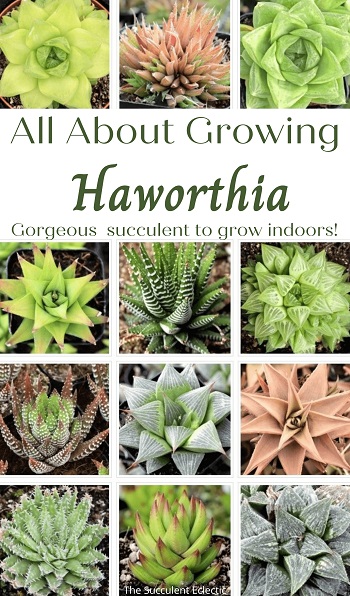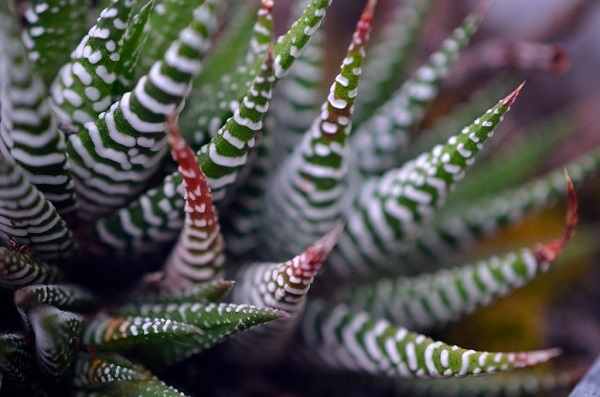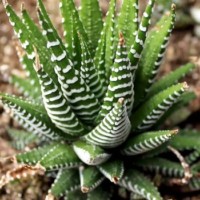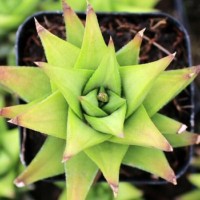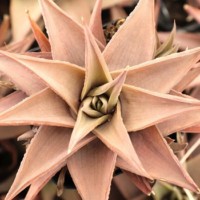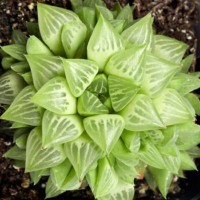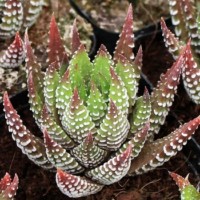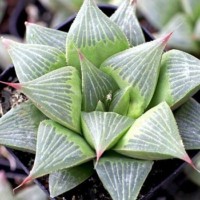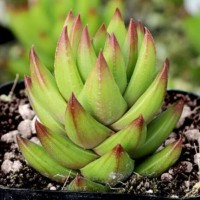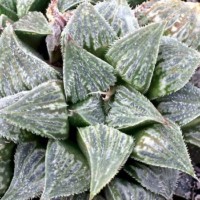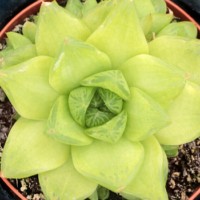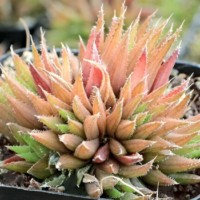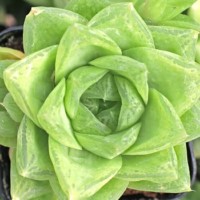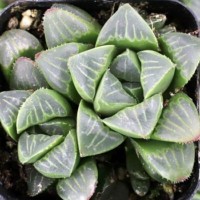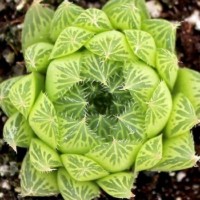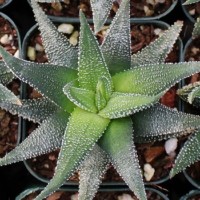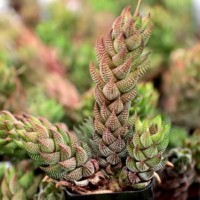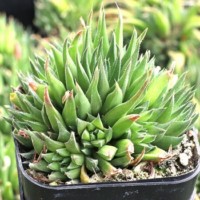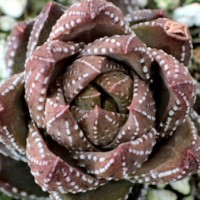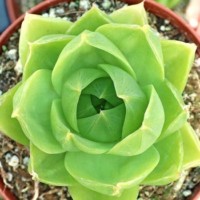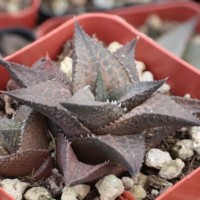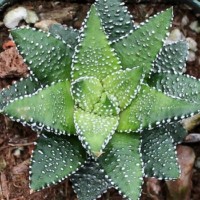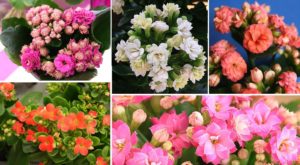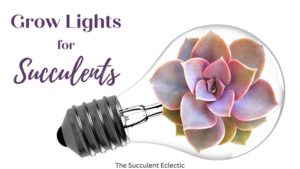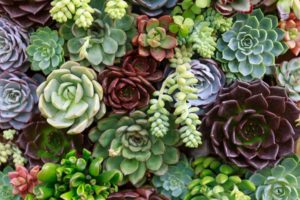Many people know Haworthia as an ideal succulent that truly thrives in the lower light conditions found in most homes. While this is certainly true, there is so much more to this genus of exquisite plants! From decorative and functional warts to glassy leaf windowsLeaf windows are specialized leaf structures specific to som... More, Haworthia succulents are ideally adapted to the harsh climate to which they are native.
All About Growing Haworthia
In this Post We'll Cover:
{Please note, some links in this post may be affiliate links to sites that pay me a small commission if you click on the link and make a purchase. This commission is at absolutely no cost to you. I only recommend products and companies that I have worked with and truly love! ~Kat}
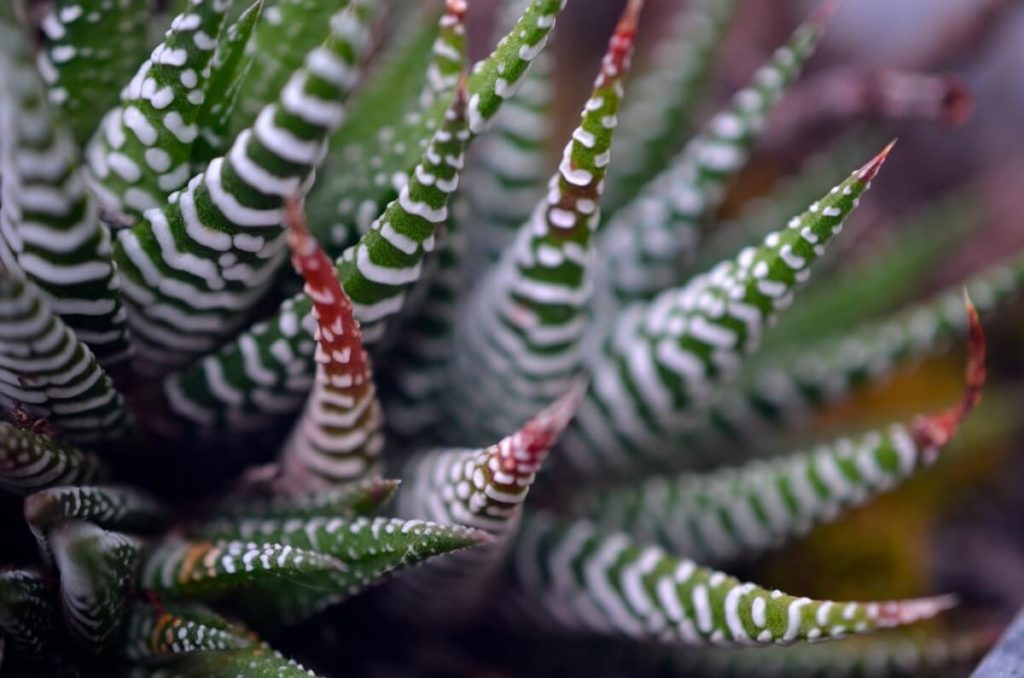
Haworthia, (Hah-WOR-thee-uh), often called the zebra plant, the pearl plant, or star window plant (for certain varieties), is a variety of small, rosette-forming succulent plants within a rather large family. The rosette form maximizes each leaf’s exposure to the sun while capturing moisture and funneling it to the plant’s root zone. There are over 70 named species and about a zillion hybrid varieties of Haworthia succulents in cultivation. Related to the aloes they often resemble, Haworthia are slow-growing succulents with highly decorative foliage and low light needs. This makes them the perfect indoor succulent plants.
Zebra Succulent
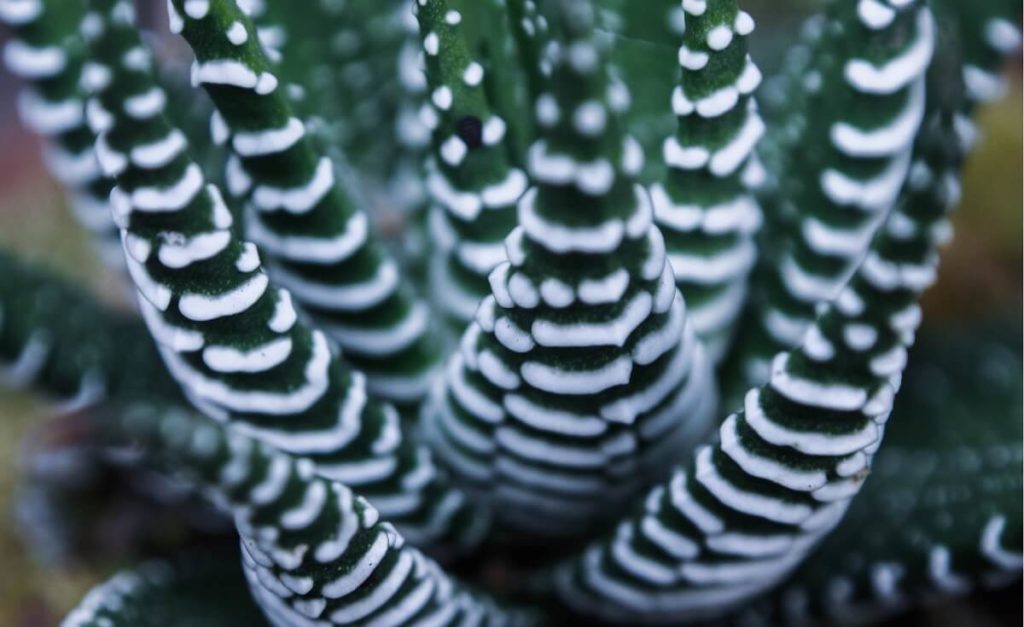
Haworthia are native to southern Africa. Most varieties are fairly small, just 1-4 inches across, though a few get as large as 12 inches in diameter. The leaves are fascinating, often speckled and spotted with bright white bumps or warts called “tubercles.” The tubercles enable the leaves to swell with water and contract in dry times without rupturing the leaf skin. Some varieties, like the H. fasciata above, have dark green leaves with many tubercles arranged in stripes, giving rise to the common name of zebra plant or zebra cactus. These varieties typically have tough, fleshy leaves. Other Haworthia succulents have a very cool adaptation for optimizing the plant’s absorption of sunlight.
Haworthia Window Plant – Leaf WindowsLeaf windows are translucent structures on the outside of ... More
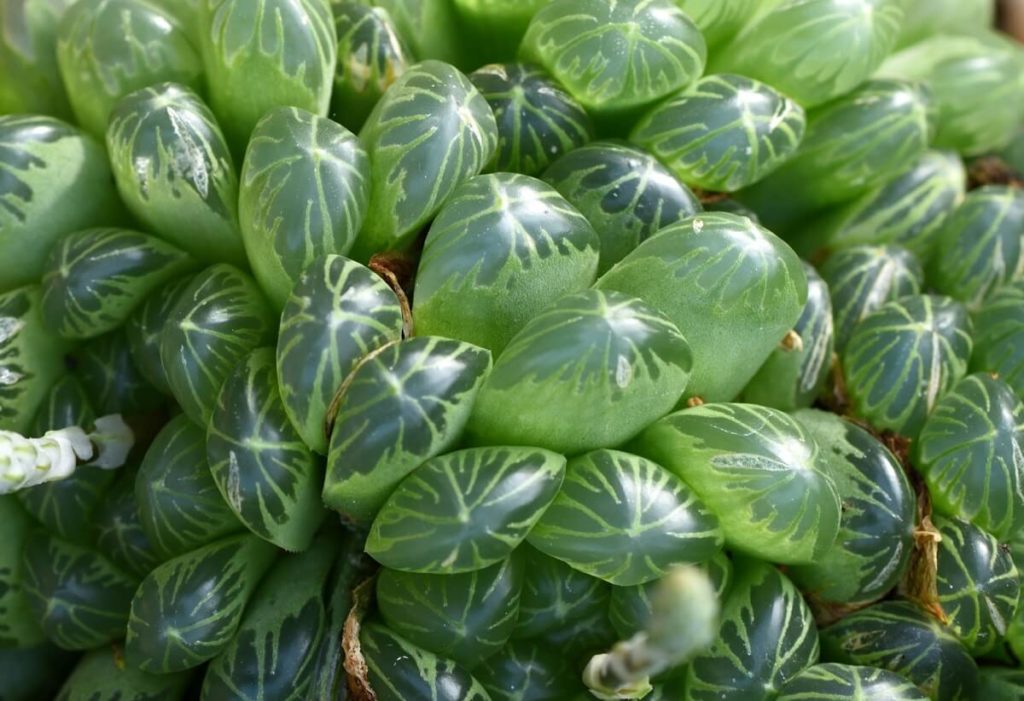
Some Haworthia succulent varieties, like the H. obtusa x venusta shown above, have structures called “leaf windows”. These give an intriguing appearance of glass to the plants’ leaves. Leaf windows are translucent structures on the outside of the leaves that allow sunlight to penetrate the leaf before reaching the chlorophyll that photosynthesizes the light into nutrition for the plant. These varieties are often called the star window plant or crystal ball succulent.
Leaf windows are common in succulents native to such a hot, dry climate that the plants often grow partially under the soil to protect them from drying out. The leaf windows peak above the ground, providing a pathway for the light to enter the interior of the plant. These glass-like window leaves enable the plant to optimize the amount of light entering the leaf and encountering the chlorophyll, with photosynthesisPhotosynthesis (FO-to-SIN-thuh-sis) is the process plants us... More occurring below ground. The water stored in the fleshy leaves further refracts and absorbs the light. This makes the glassy appearance even more pronounced. The size and location of the leaf windows vary widely from one species to the next. Many of the known plants that feature window leaves, like Haworthia varieties and Fenestraria, are native to southern Africa.
Flowers
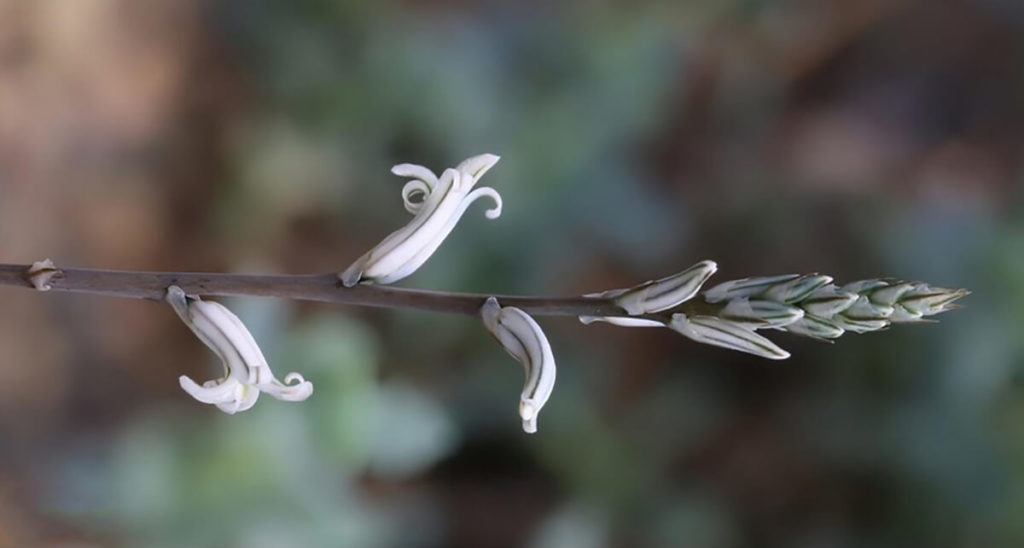
Haworthia produce simple flowers, though some plants may go years between bloomings while others seem to be flowering nearly year-round. The blooms are typically dainty and appear largely similar throughout the genus.
Planting Haworthia
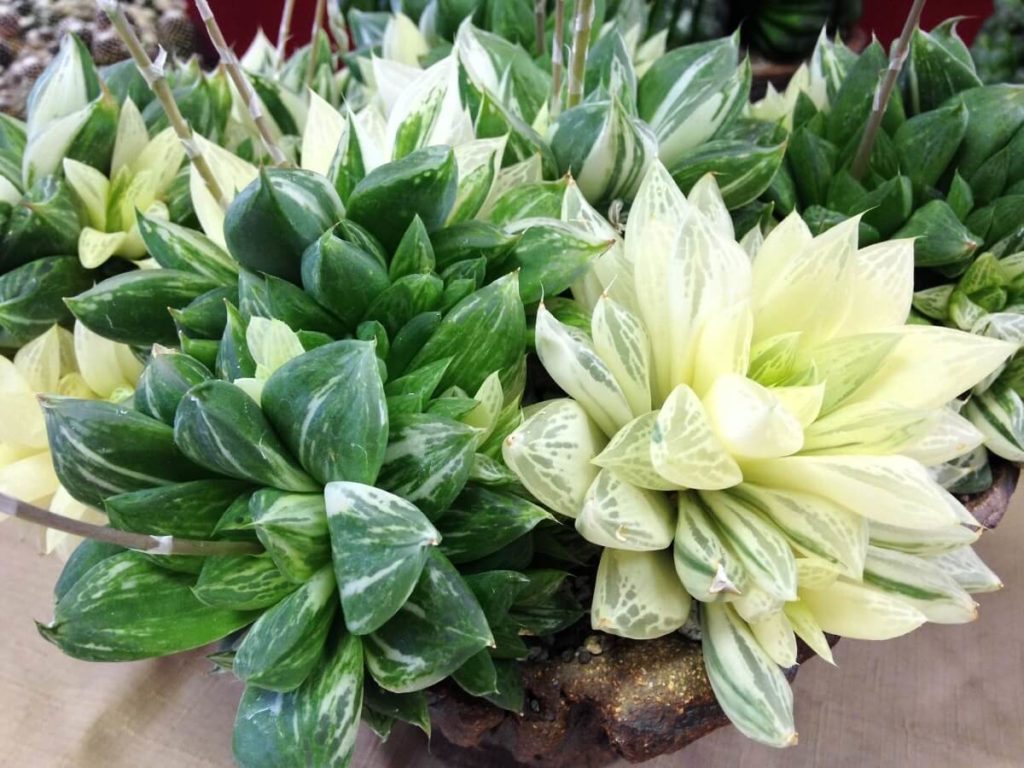
All varieties of Haworthia will thrive in containers. Outdoors, they are typically hardy zones 8B through 11, able to withstand temperatures down to 20° in the winter. Haworthia succulents will thrive in indoor conditions year-round. Their adaptations to low light levels mean they are typically quite happy with indoor lighting. Their slow growth habit means their care, as well as size, remains nicely consistent.
Succulent Soil
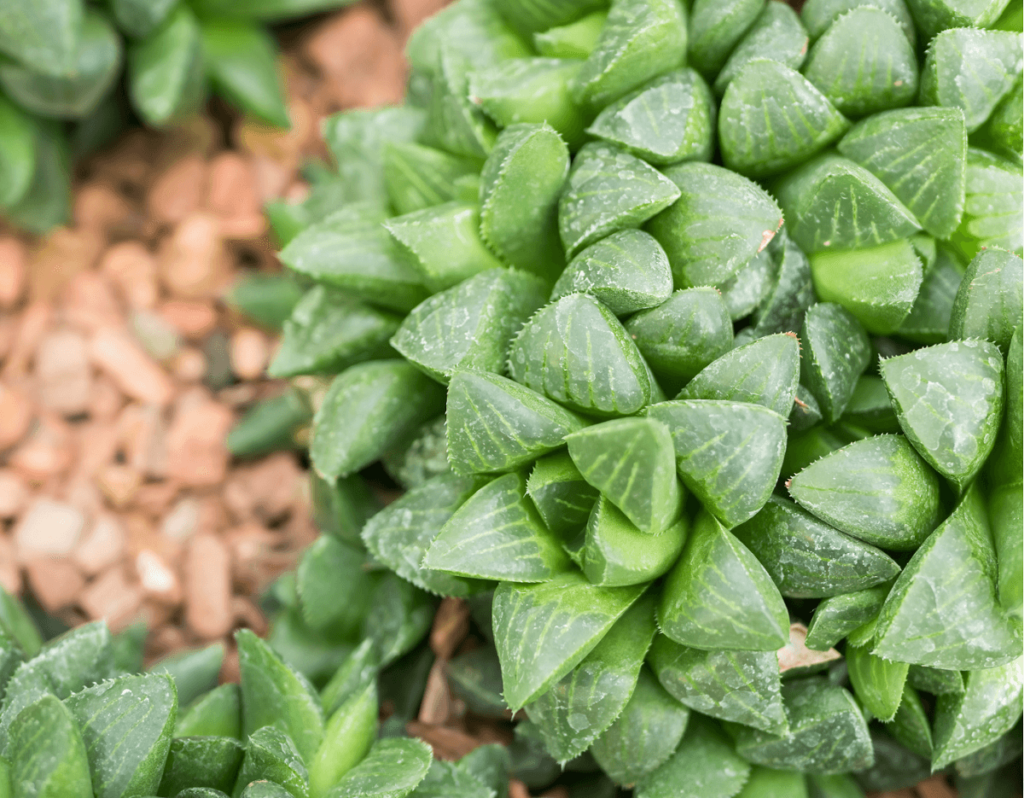
Like most succulents, Haworthia need fast-draining soil with large, gritty particles that allow for plenty of oxygen in the soil around the roots. There are many recipes for succulent soil, or simply purchase soil marketed for citrus, palms, or cactus for an excellent solution. To learn more about succulents’ specific soil needs, click here. Replant and refresh the soil every three years to ensure your Haworthia have sufficient nutrients available to them.
Watering Haworthia
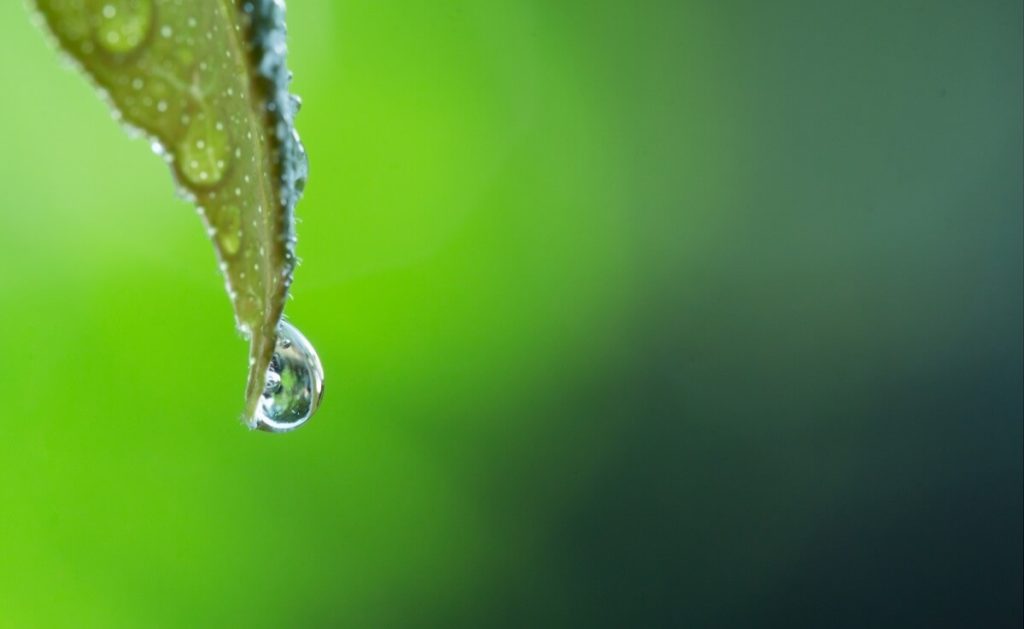
Like most succulents, Haworthia do not like to sit in wet soil. In general, plan to water only every few weeks, when the soil is fully dry. Always water from the bottom and saturate the soil. Empty any catch tray within a few minutes to allow it to dry well. Indoors, especially in the winter, you will only water your Haworthia succulents once every 3-4 weeks. The proper watering for your succulents is so important; please read here all about watering your succulent plants.
Fertilize lightly just twice a year, in the spring and in the fall. I like to use fish emulsion for my succulent plants.
Haworthia Light Requirements
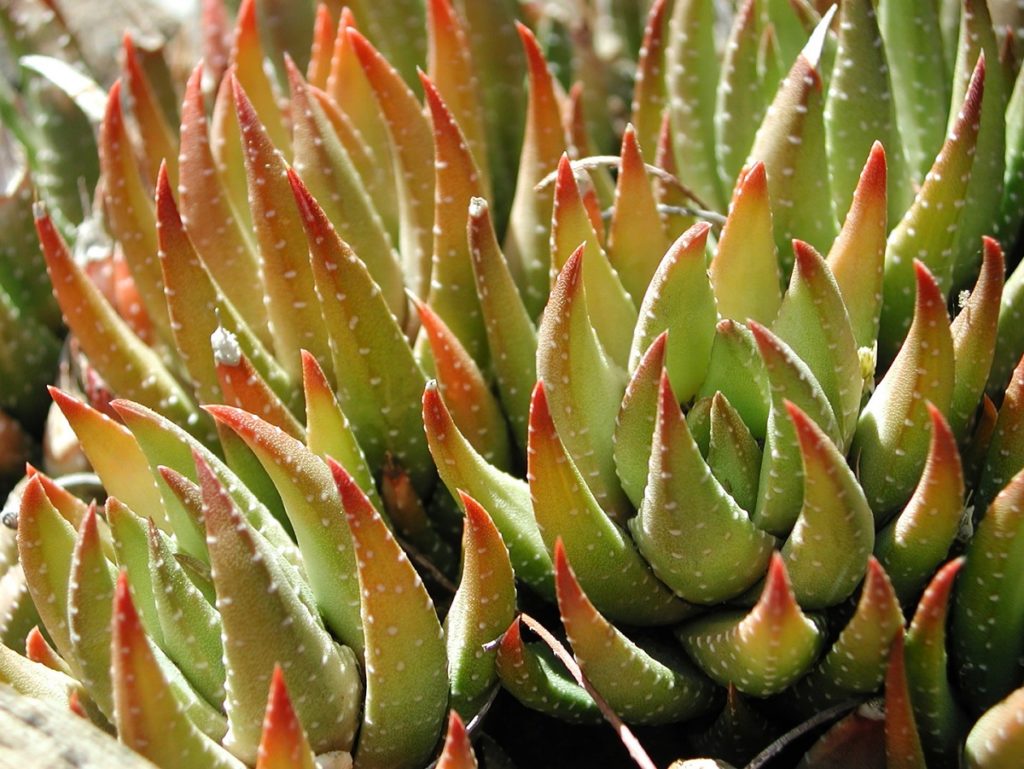
Your Haworthia will be happy with general indoor lighting year-round. Outdoors, bright, indirect light is generally considered best. Haworthia leaves are prone to sunburn if exposed to too much direct sunlight. Their petite size and slow growth also make Haworthia ideal plants for terrariums.
However, if you take care to acclimate them gradually and carefully, Haworthia can be grown in full sun in moderate climates. The colors range from yellows, oranges, and reds as the Haworthia succulents develop and display protective pigments in response to the stress of full sun. You can see this in the image of the Haworthia coarctata above.
Can Haworthia Grow in Full Sun?
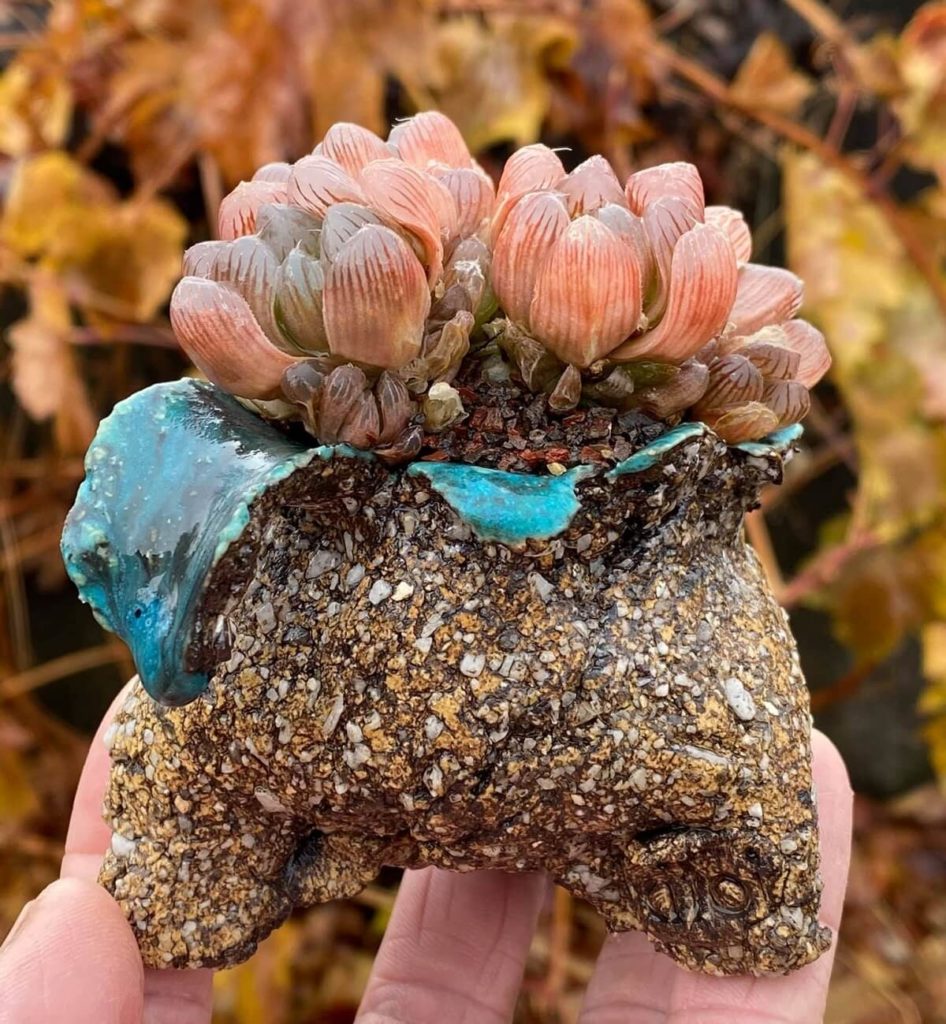
Gifted ceramic artist Keith Kitoi Taylor shared his experience growing Haworthia in full sun. In a mild winter climate, he grew this Haworthia cooperi v obtusa in full winter sun and full sun until noon on hot summer days. The bright, apple-green leaves flush an intriguing salmon color. In their native land, this plant would likely be found growing in full sun with soil covering all but the glassy leaf tips.
Keith advises that Haworthia grown in full sun require a bit more frequent watering to thrive while in full sun. Figure every 7-10 days. He also recommends using succulent soil high in mineral content like pumice, chicken grit, or crushed granite. When temperatures soar near to or above 100°F (38° C), he provides shades starting around 11 am to noon. To learn more about Keith Kitoi Taylor and his extraordinary handmade pottery, follow him on Instagram or check out his business page on Facebook, Pottery by Kitoi!
Haworthia Propagation
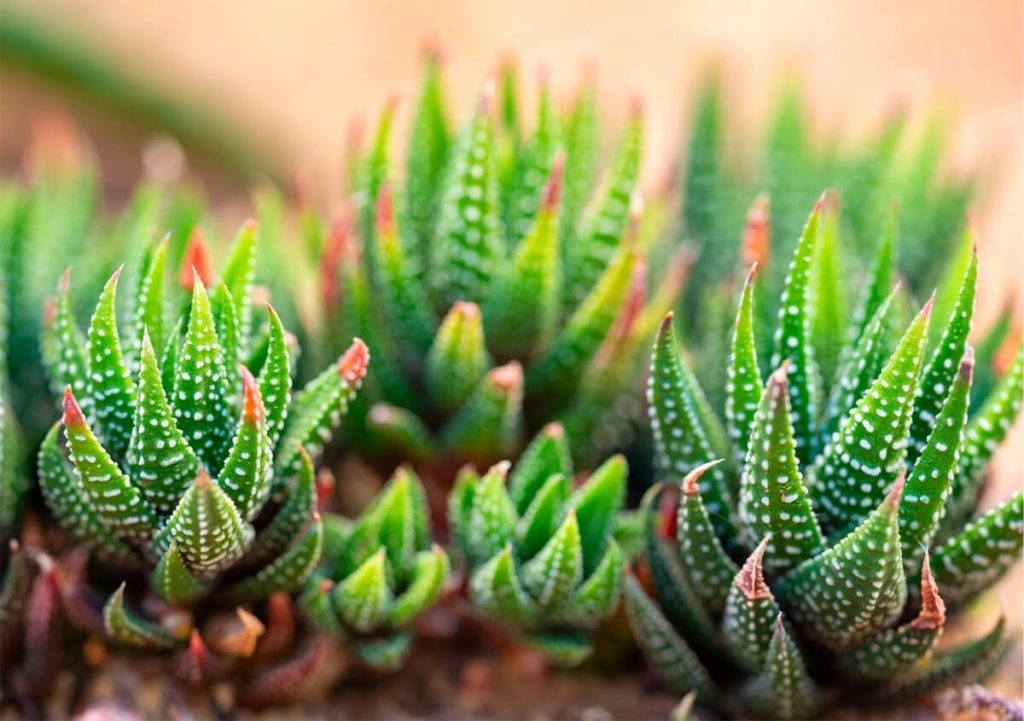
The most simple and quickest method of Haworthia propagation is by dividing offsets from the mother plant. They can also be grown from seeds, reaching the size of a two-inch potted plant in about 18 months. Leaf propagation is far slower for Haworthia than for other succulents, but choosing a young, healthy leaf can yield results a bit more quickly.
Is Haworthia Toxic to Pets?

Haworthia succulents are non-toxic and entirely safe to grow around cats, dogs, and small children — even if they nibble!
This symbol denotes pet-safe succulents. For more information about succulents and pets, just click on this image anywhere on this site.
Shopping for Haworthia
Haworthia’s adaptations to low lighting make them perfect for growing indoors this winter.
Mountain Crest Gardens, one of my favorite succulent suppliers, offers a wealth of Haworthia succulents available for you to order – 100+ Haworthia varieties in addition to a wide array of other succulents and cacti! Check out the amazing range of colors, shapes, and textures, among just a few of my favorites:
Haworthia Frequently Asked Questions (FAQs)
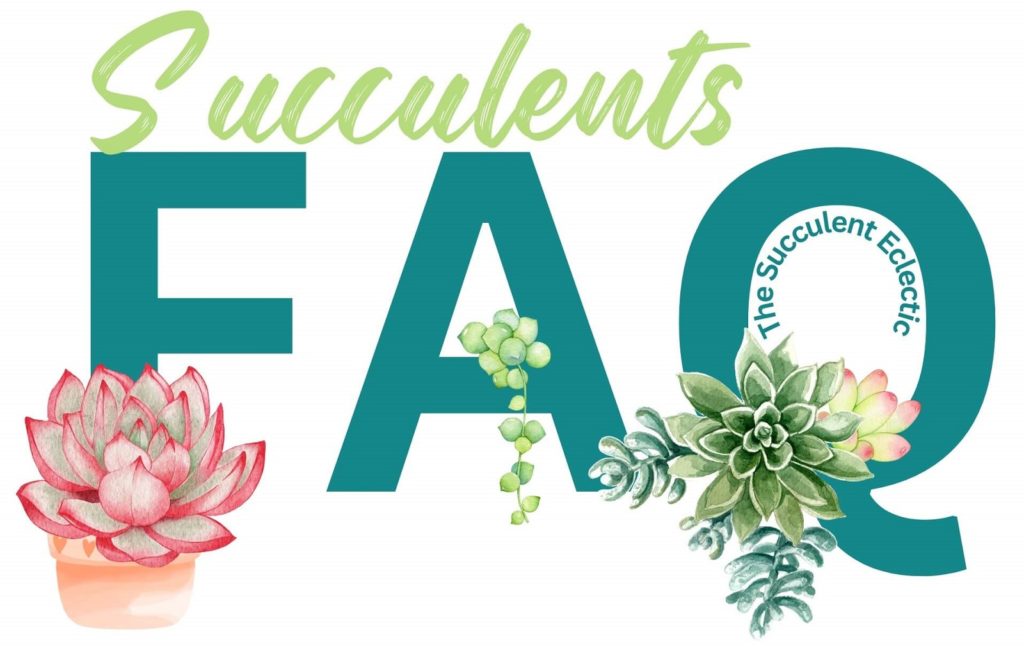
Do Haworthia need full sun?
Haworthia typically thrive in dappled shade or bright, indirect light. While some varieties can adapt to full sun, this is not their usual preference, and careful acclimation is necessary to avoid sunburn.
Should Haworthia be inside or outside?
Haworthia succulents grow well indoors or out, but they must be protected from frost. If you grow your Haworthia outdoors, bring them inside before the first frost. Provide plenty of light indoors, and they will thrive.
How often should you water Haworthia?
Haworthia can happily go for weeks without water. The best time to water Haworthia is whenever the soil is completely dry. If you notice the leaves are beginning to wrinkle, it’s time to water.
Why do Haworthia tips turn brown?
If your Haworthia’s leaves are turning brown at the tips, it is a sign there is a problem in its growing conditions. The possible causes are watering too little at a time, not watering frequently enough, the air is too dry, the plant is too close to an active heating or cooling vent, or it is in too much direct sunlight. Browning leaf tips are a sign your succulent needs a change in its care.
Will You Grow Your Haworthi Indoors or Out?
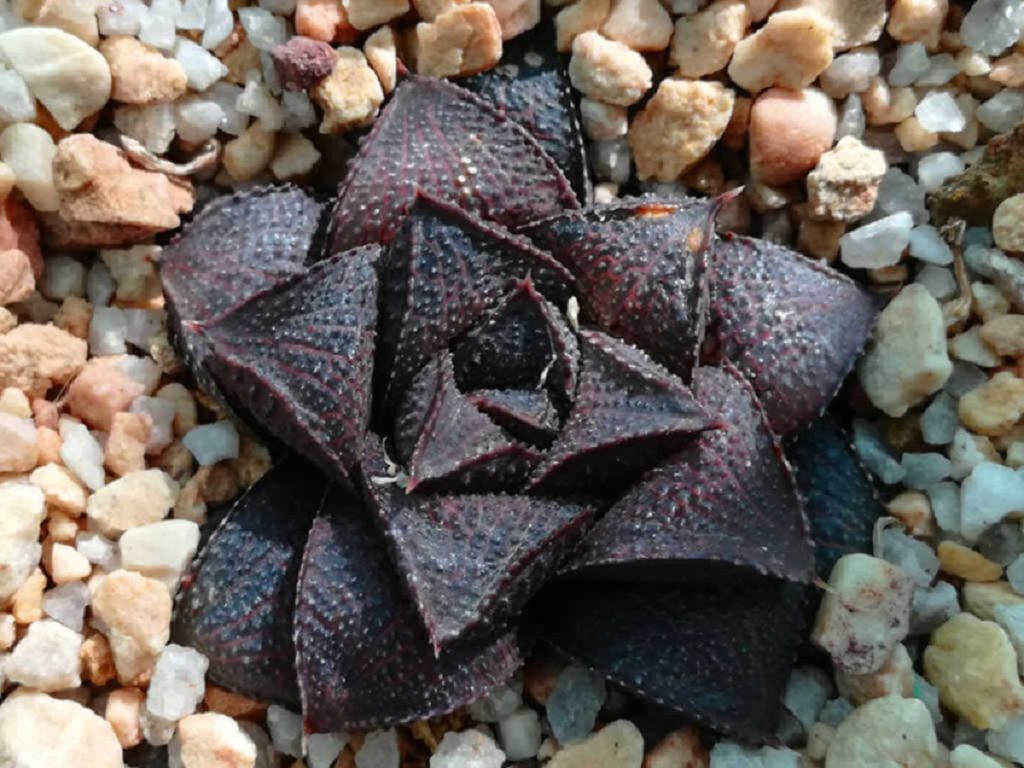
I hope you have enjoyed this deep dive into Haworthia succulents. I would love to know — do you already grow them? Will you give these little gems a try? Please take a moment to leave a comment and let me know! And feel free to ask me any questions — I am happy to help!
Happy gardening!

P.S. I hope you will subscribe to The Succulent Eclectic! Thanks! 🙂
P.P.S. Why not join my Facebook Group for succulent lovers? We talk about succulent care, propagation, succulent identification, and design. It’s a warm and welcoming group that would love to meet you!
